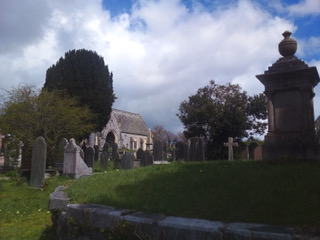A tree synonymous with old church yards and cemeteries in the United Kingdom is Taxus bachata or the Yew. Ford Park Cemetery has some magnificent Yews especially in the historic quarter in front of the chapels.

This evergreen conifer which can grow up to 20 metres (65 feet) tall has soft straight needle-shaped green leaves and red berry-like fruits called Aril, popular with birds and small mammals, such as squirrels. The very dark and upright form of the Yew was popular in Victorian cemeteries to represent the sombre shades of grief and to stand like sentinels to ward off evil spirits.
But every part of this tree is highly poisonous to people and larger animals which is why it’s said the Yew was originally planted in church yards to deter farmers from letting their sheep or cattle wander on to church land to graze.
The wood from the Yew is extremely strong and resistant to breaking which made it perfect material to make longbows. Indeed the fatal arrow which killed the Anglo-Saxon King Harold Godwinson in the Battle of Hastings of 1066 was fired from a yew longbow. Though its popularity as the material to make these weapons resulted in a severe depletion of this tree population in Europe.
The Yew was said to be sacred to Hecate, the Greek goddess associated with death, witchcraft and magic.
The Yew can also symbolise renewal because of its ability to regenerate new trunks on the spot where the low hanging branches make contact with the earth. Likewise in Celtic culture this plant symbolised death and resurrection, the Druids regarded the Yew as sacred, and in Christianity times the deceased would be buried with yew branches.
Symbolically this tree represented immortality and everlasting life because of its astonishing longevity in excess of 3,000 years; though this might be challenging to evidence because of the absence of rings to establish the age in the hollow trunks.
Many ancient yews have hollow trunks, and one magnificent example stands in the grounds of the Parish Church of St Andrew in Kenn, near the Devon city of Exeter. The male Yew is said to be older than Christianity itself and pre-dates the Norman font within the Grade I listed red sandstone church.


